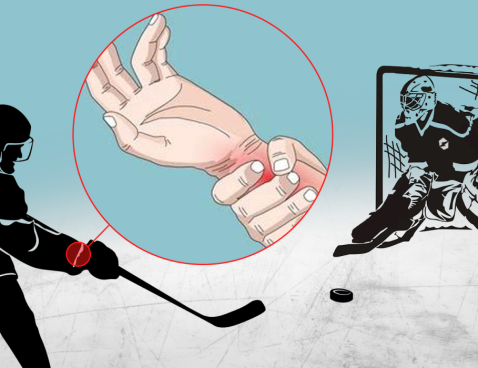Written by
Scott Murray
Scott Murray is the player-coach-GM of Thailand's fabled expat hockey squad, the Flying Farangs. He is also the Vice President of the Siam Hockey League and a lifelong hockey fan and aficionado, remembering attending original six games at Maple Leaf Gardens.
- March 7, 2022
- Product Insight
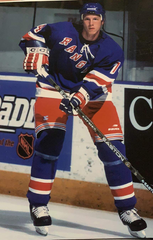

Rory Rawlyk stands 6’8” tall in skates. It might surprise you that the ice this Canadian-born hockey player now stands at center ice to coach teams of young men and women in Bangkok, Thailand.
Rory Rawlyk is in Thailand not just to coach hockey, but to instill a hockey culture and take young Thai players to the next level of their hockey development as they climb up the International Ice Hockey Federation’s ranking ladder.
In Asia, you need to differentiate between ice and field hockey, as the latter is more common here, and hockey sticks still get confused for golf and polo clubs.
Rory brings with him a lifetime of experience, practical knowledge and connections in the hockey world. The skill-set he has developed over his career has given him the ability to prepare young athletes with the tools they need to succeed in the world’s fastest game.
For inspiration, Rory didn’t have to look any further than his parents. His mother Norma suffered with Multiple Sclerosis for thirty years until she passed three years ago and his dad, Ray, stood by her side the entire time.
Life in pro hockey can be tough with the constant travel and injuries that come from playing the game, but whenever Rory started to feel sorry for himself he’d think of his mum and all the pain she had to endure and his dad’s stoic devotion to her.
Rory, like most hockey players, has seen his share of good and bad coaches, but says his biggest coaching influence was Brent Sutter, who won two Stanley Cups playing with the New York Islanders and also coached the New Jersey Devils and Calgary Flames in the NHL. Sutter coached Rory when he played for the Red Deer Rebels and helped him become a pro and fine-tune his defensive game.
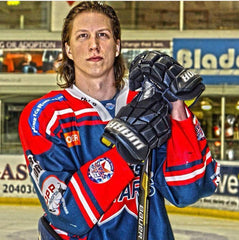

Rory is a native of Gibbons, Alberta, a town of 3,000 people, about 40km from Edmonton. “Hockey was everything,” he recalls “If you weren’t on the ice, you were playing road or roller hockey, video hockey and watching Rock’em Sock’em Hockey. Rory’s one blood bother Troy is an RCMP officer stationed in British Columbia, but his parents were foster parents so he had 30 plus surrogate brothers and sisters growing up – lots of street hockey companions.
Rory’s family moved to Edmonton when he was 11. His dad worked for the water department and he wanted to be in Edmonton to better care for Rory’s mum’s illness. Rory’s team went to the famous Quebec PeeWee tournament that year. He actually started his hockey career as a forward. As time went on his play developed, he made the switch to defense and he kept getting selected for better and better teams eventually landing in the prized Western Hockey League playing for the Medicine Hat Tigers. Things didn’t turn out as he had hoped, so he returned to the Camrose Kodiacks in provincial tier two hockey.
Camrose went on a tear that year and won the Royal Bank Cup with Rory playing a huge role in the victory. His performance led the New York Rangers to invite him to rookie camp in Kitchener, Ontario, in the fall of 2001, where he played against others rookies from Toronto, Boston & Carolina. On his birthday, September 9th, the last day of his rookie camp, he was invited to the Ranger camp in New York City. He flew to the Big Apple on September 10th.
The Rangers’ fitness tests were actually scheduled for a hotel in the World Trade Centre complex, but the day before 9-11 they were switched to Madison Square Garden. And Rory was in Madison Square Garden doing his fitness tests when the towers collapsed. We’d need a whole other story to go into what he experienced leaving Madison Square Garden seeing the carnage, terror and mayhem that had been wreaked on Manhattan.
Recalling his first Ranger camp, Rory says, “I was 17 at the time and I was playing with Brian Leetch and Mark Messier, players like that. Who wouldn’t learn from that? They’re amazing hockey players. Just their puck movement: Leetch, was particularly good with that. I played with him for a little bit my first year. You see what it takes, you watch those guys and how they act. Just hanging out with them off the ice, going out for dinner, that kind of stuff, it matures you as a player and as a person off the ice. Going to an NHL camp opened my eyes and gave me that extra drive. You see how the NHL players live and all their perks they have, it makes you want to get there so much more.”
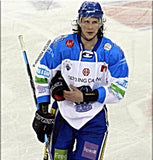

Looking back, Rory realizes the window of opportunity for the making the NHL is very small. Glen Sather, the Rangers GM at the time, had him penciled in to play in a couple of exhibition games that pre-season including one against the Montreal Canadiens, but after the attacks all the players that were on the bubble were shipped off to Rye, New York, the Rangers old practice facility. Then they were moved onto the Rangers farm clubs in Hartford in the American League and Charlotte in the ECHL. He never got to play in those exhibition games.
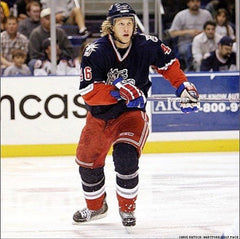

Rory was also a free spirit, and said what came to his mind. “I had the swag, the personality, but everything was so old-school back then. My game was build for the modern game.” At 6’5”, 190-pounds Rory knew how to handle himself and would never walk away from a fight, but he wanted to play, and skate, not sit in the penalty box collecting PIMs with knuckleheads.
Rory eventually went back to the WHL, playing for Red Deer and they lost to Kelowna in the WHL finals, “We lost to Kelowna, who had future NHL stars Duncan Keith & Shea Weber on their team, so we just missed the chance to go to the Memorial Cup.”
From 2003-2006, Rory spent time between Hartford and Charlotte and then in the fall of 2006 he went to play in Sweden, but the coach didn’t like Canadians. So he returned to North America to play for Cincinnati in the ECHL, and then Binghamton, Ottawa’s farm team, signed him. The Senators went to the Stanley Cup that year, lost to Anaheim in five games and then cleaned house in their minor-league system.
Rory then signed a three-way deal with the San Jose Sharks and their minor-league affiliates Worcester, and Phoenix. He wasn’t enjoying himself there so in the fall of 2008 he decided to go return to Germany (he played there earlier in his career) and he stayed in Europe until the spring of 2015, also playing in the British Elite League and the MOL (the Hungarian, Slovakian and Romanian league).
Back in North America, he contacted an old equipment manager named Adam Dexter who was working for the Orlando Sun Bears (Toronto’s ECHL team), he arranged for Rory to talk to the team coach Anthony Noreen and a try-out was set. Rory made the squad and remembers Orlando fondly. “It was a first-class practice facility and rink,” he says. “I loved it; I would have played there for ten years if I could. It recharged me.”
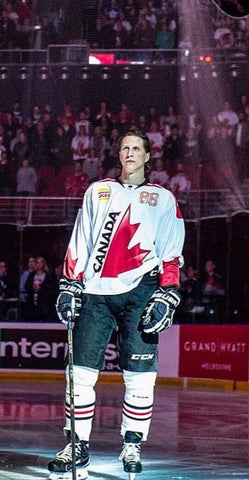

His final year in North America saw him captaining the Evansville franchise in the Southern Professional Hockey League (SPHL) – they had offered & then rescinded the head coaching job to him. That got him thinking about playing in Asia. He had always been interested in the region, he likes traveling, and he’s played in 16 countries.
He took a job working in Bejing as a coach helping young players prepare for Olympic contention. He was there when COVID hit and ended up spending 54 days of strict isolation in China and Canada. Wallace Snowden of the CBC wrote a great story detailing Rory’s quarantine experience: (https://www.cbc.ca/news/canada/edmonton/rory-rawlyk-hockey-covid-bejing-1.5514592).
Then an old friend from Alberta named Jason Swales reached out to him back in Canada about a project he was working on in Bangkok asking Rory if he would be interested in moving to the Land of Smiles. After a series of discussions with Jumpol Kurusakdapong it was arranged for Rory to come to Thailand in early 2021 to train his kids, The majority of the ice rinks in Thailand were still closed due to COVID precautions so Rory spent the first few months focused on dry-land training. Now he’s back on the ice doing what he does best – teaching hockey. Rory will also focus on skills and off-ice training, and running camps specializing in particular areas such as defense.
But what message does Rory hope to convey to the young Thai players? “I want to teach them the game, so that they can get a feel for how it is supposed to be played and hopefully that will inspire them more. Passing isn’t a priority here, but sometimes the nicest play is the pass. The game is oriented to the individual player here, but that has to change — once you can teach the players to play like a team everyone will do better.
“Everyone wants to be the goal scorer, but fans and players alike must learn to understand the contribution of the guys who do things like block shots and make nice breakout passes. A team can’t also be built just around one or two guys. Who wants to play when one guy is holding the puck the entire time, how can you enjoy the game if you don’t feel part of it?
“As for the good players, if you are as good as you think you are you should be making the players around you better. I want to create a much more competitive atmosphere. I want players coming to training camp knowing that if they don’t perform well they may not make the team. There is a sense of entitlement here but players shouldn’t be just handed a spot, they need to earn it.”
Rory is rarin’ at the bit: he is still waiting for the two new rinks in Bangkok to open and he is spending some of his time playing shinny with the country’s expat team, the Flying Farangs, who aren’t used to having a player of Rory’s ability skate with them on a regular basis. Rory has the potential to make a huge difference in the lives of young Thai hockey players – many are hoping he does just that.

